Inferno Read online
Page 32
Although Langdon had been fairly familiar with the history of the horses, the ARCA site contained a passage that startled him.
The decorative collars were added to the horses’ necks in 1204 by the Venetians to conceal where the heads had been severed to facilitate their transportation by ship from Constantinople to Venice.
The doge ordered the heads cut off the Horses of St. Mark’s? It seemed unthinkable to Langdon.
“Robert?!” Sienna’s voice was calling.
Langdon emerged from his thoughts, turning to see Sienna pushing her way through the crowd with Ferris close at her side.
“The horses in the poem!” Langdon shouted excitedly. “I figured it out!”
“What?” Sienna looked confused.
“We’re looking for a treacherous doge who severed the heads from horses!”
“Yes?”
“The poem isn’t referring to live horses.” Langdon pointed high on the facade of St. Mark’s, where a shaft of bright sun was illuminating the four copper statues. “It’s referring to those horses!”
CHAPTER 73
On board The Mendacium, Dr. Elizabeth Sinskey’s hands were trembling. She watched the video in the provost’s study, and although she had seen some terrifying things in her life, this inexplicable movie that Bertrand Zobrist had made before his suicide left her feeling as cold as death.
On the screen before her, the shadow of a beaked face wavered, projected on the dripping wall of an underground cavern. The silhouette continued speaking, proudly describing his masterpiece—the creation called Inferno—which would save the world by culling the population.
God save us, Sinskey thought. “We must …” she said, her voice quavering. “We must find that underground location. It may not be too late.”
“Keep watching,” the provost replied. “It gets stranger.”
Suddenly the shadow of the mask grew larger on the wet wall, looming hugely before her, until a figure stepped suddenly into the frame.
Holy shit.
Sinskey was staring at a fully outfitted plague doctor—complete with the black cloak and chilling beaked mask. The plague doctor was walking directly toward the camera, his mask filling the entire screen to terrifying effect.
“ ‘The darkest places in hell,’ ” he whispered, “ ‘are reserved for those who maintain their neutrality in times of moral crisis.’ ”
Sinskey felt goose bumps on her neck. It was the same quotation that Zobrist had left for her at the airline counter when she had eluded him in New York a year ago.
“I know,” the plague doctor continued, “that there are those who call me monster.” He paused, and Sinskey sensed his words were directed at her. “I know there are those who think me a heartless beast who hides behind a mask.” He paused again, stepping closer still to the camera. “But I am not faceless. Nor am I heartless.”
With that, Zobrist pulled off his mask and lowered the hood of his cloak—his face laid bare. Sinskey stiffened, staring into the familiar green eyes she had last seen in the darkness of the CFR. His eyes in the video had the same passion and fire, but there was something else in them now—the wild zeal of a madman.
“My name is Bertrand Zobrist,” he said, staring into the camera. “And this is my face, unveiled and naked for the world to see. As for my soul … if I could hold aloft my flaming heart, as did Dante’s Lord for his beloved Beatrice, you would see I am overflowing with love. The deepest kind of love. For all of you. And, above all, for one of you.”
Zobrist stepped closer still, gazing deep into the camera and speaking softly, as if to a lover.
“My love,” he whispered, “my precious love. You are my beatitude, my destroyer of all vices, my endorser of all virtue, my salvation. You are the one who lay naked at my side and unwittingly helped me across the abyss, giving me the strength to do what I now have done.”
Sinskey listened with repulsion.
“My love,” Zobrist continued in a doleful whisper that echoed in the ghostly subterranean cavern in which he spoke. “You are my inspiration and my guide, my Virgil and my Beatrice all in one, and this masterpiece is as much yours as it is mine. If you and I, as star-crossed lovers, never touch again, I shall find my peace in knowing that I have left the future in your gentle hands. My work below is done. And now the hour has come for me to climb again to the world above … and rebehold the stars.”
Zobrist stopped talking, and the word stars echoed a moment in the cavern. Then, very calmly, Zobrist reached out and touched the camera, ending his transmission.
The screen went black.
“The underground location,” the provost said, turning off the monitor. “We don’t recognize it. Do you?”
Sinskey shook her head. I’ve never seen anything like it. She thought of Robert Langdon, wondering if he had made any more headway in deciphering Zobrist’s clues.
“If it’s of any help,” the provost said, “I believe I know who Zobrist’s lover is.” He paused. “An individual code-named FS-2080.”
Sinskey jumped up. “FS-2080?!” She stared at the provost in shock.
The provost looked equally startled. “That means something to you?”
Sinskey gave an incredulous nod. “It most certainly does.”
Sinskey’s heart was pounding. FS-2080. While she didn’t know the identity of the individual, she certainly knew what the code name stood for. The WHO had been monitoring similar code names for years.
“The Transhumanist movement,” she said. “Are you familiar with it?”
The provost shook his head.
“In the simplest terms,” Sinskey explained, “Transhumanism is a philosophy stating that humans should use all available technologies to engineer our own species to make it stronger. Survival of the fittest.”
The provost shrugged as if unmoved.
“Generally speaking,” she continued, “the Transhumanist movement is made up of responsible individuals—ethically accountable scientists, futurists, visionaries—but, as in many movements, there exists a small but militant faction that believes the movement is not moving fast enough. They are apocalyptic thinkers who believe the end is coming and that someone needs to take drastic action to save the future of the species.”
“And I’m guessing,” the provost said, “that Bertrand Zobrist was one of these people?”
“Absolutely,” Sinskey said. “A leader of the movement. In addition to being highly intelligent, he was enormously charismatic and penned doomsday articles that spawned an entire cult of zealots for Transhumanism. Today, many of his fanatical disciples use these code names, all of which take a similar form—two letters and a four-digit number—for example, DG-2064, BA-2105, or the one you just mentioned.”
“FS-2080.”
Sinskey nodded. “That could only be a Transhumanist code name.”
“Do the numbers and letters have meaning?”
Sinskey motioned to his computer. “Pull up your browser. I’ll show you.”
The provost looked uncertain but went to his computer and launched a search engine.
“Search for ‘FM-2030,’ ” Sinskey said, settling in behind him.
The provost typed FM-2030, and thousands of Web pages appeared.
“Click any of them,” Sinskey said.
The provost clicked the top hit, which returned a Wikipedia page showing a picture of a handsome Iranian man—Fereidoun M. Esfandiary—whom it described as an author, philosopher, futurist, and forefather of the Transhumanist movement. Born in 1930, he was credited with introducing Transhumanist philosophy to the multitudes, as well as presciently predicting in vitro fertilization, genetic engineering, and the globalization of civilization.
According to Wikipedia, Esfandiary’s boldest claim was that new technologies would enable him to live to be a hundred years old, a rarity for his generation. As a display of his confidence in future technology, Fereidoun M. Esfandiary changed his name to FM-2030, a code name created by combining his first and
middle initials along with the year in which he would turn one hundred. Sadly, he succumbed to pancreatic cancer at age seventy and never reached his goal, but in honor of his memory, zealous Transhumanist followers still paid tribute to FM-2030 by adopting his naming technique.
When the provost finished reading, he stood up and walked to the window, staring blankly out at the ocean for a long moment.
“So,” he finally whispered, as if thinking aloud. “Bertrand Zobrist’s lover—this FS-2080—is obviously one of these … Transhumanists.”
“Without a doubt,” Sinskey replied. “I’m sorry I don’t know exactly who this FS-2080 is, but—”
“That was my point,” the provost interrupted, still staring out to sea. “I do know. I know exactly who it is.”
CHAPTER 74
The air itself seems fashioned of gold.
Robert Langdon had visited many magnificent cathedrals in his life, but the ambience of St. Mark’s Chiesa d’Oro always struck him as truly singular. For centuries it had been claimed that simply breathing the air of St. Mark’s would make you a richer person. The statement was intended to be understood not only metaphorically, but also literally.
With an interior veneer consisting of several million ancient gold tiles, many of the dust particles hovering in the air were said to be actual flecks of gold. This suspended gold dust, combined with the bright sunlight that streamed through the large western window, made for a vibrant atmosphere that helped the faithful attain both spiritual wealth and, provided they inhaled deeply, a more worldly enrichment in the form of gilding their lungs.
At this hour, the low sun piercing the west window spread out over Langdon’s head like a broad, gleaming fan, or an awning of radiant silk. Langdon could not help but draw an awestruck breath, and he sensed Sienna and Ferris do the same beside him.
“Which way?” Sienna whispered.
Langdon motioned toward a set of ascending stairs. The museum section of the church was on the upper level and contained an extensive exhibit devoted to the Horses of St. Mark’s, which Langdon believed would quickly reveal the identity of the mysterious doge who had severed the animals’ heads.
As they climbed the stairs, he could see that Ferris was struggling again with his breathing, and Sienna caught Langdon’s eye, which she had been trying to do for several minutes now. Her expression was cautionary as she nodded discreetly toward Ferris and mouthed something Langdon couldn’t understand. Before he could ask her for clarification, though, Ferris glanced back, a split second too late, for Sienna had already averted her eyes and was staring directly at Ferris.
“You okay, Doctor?” she asked innocently.
Ferris nodded and climbed faster.
The talented actress, Langdon thought, but what was she trying to tell me?
When they reached the second tier, they could see the entire basilica spread out beneath them. The sanctuary had been constructed in the form of a Greek Cross, far more square in appearance than the elongated rectangles of St. Peter’s or Notre-Dame. With a shorter distance from narthex to altar, St. Mark’s exuded a robust, sturdy quality, as well as a feeling of greater accessibility.
Not to appear too accessible, however, the church’s altar resided behind a columned screen topped by an imposing crucifix. It was sheltered by an elegant ciborium and boasted one of the most valuable altar-pieces in the world—the famed Pala d’Oro. An expansive backdrop of gilded silver, this “golden cloth” was a fabric only in the sense that it was a fused tapestry of previous works—primarily Byzantine enamel—all interwoven into a single Gothic frame. Adorned with some thirteen hundred pearls, four hundred garnets, three hundred sapphires, as well as emeralds, amethysts, and rubies, the Pala d’Oro was considered, along with the Horses of St. Mark’s, to be one of the finest treasures in Venice.
Architecturally speaking, the word basilica defined any eastern, Byzantine-style church erected in Europe or the West. Being a replica of Justinian’s Basilica of the Holy Apostles in Constantinople, St. Mark’s was so eastern in style that guidebooks often suggested it as a viable alternative to visiting Turkish mosques, many of which were Byzantine cathedrals that had been turned into Muslim houses of worship.
While Langdon would never consider St. Mark’s a stand-in for the spectacular mosques of Turkey, he did have to admit that one’s passion for Byzantine art could be satisfied with a visit to the secret suite of rooms just off the right transept in this church, in which was hidden the so-called Treasure of St. Mark—a glittering collection of 283 precious icons, jewels, and chalices acquired during the looting of Constantinople.
Langdon was pleased to find the basilica relatively quiet this afternoon. There were still throngs of people, but at least there was room to maneuver. Weaving in and out of various groups, Langdon guided Ferris and Sienna toward the west window, where visitors could step outside and see the horses on the balcony. Despite Langdon’s confidence in their ability to identify the doge in question, he remained concerned about the step they’d have to take after that—locating the doge himself. His tomb? His statue? This would probably require some form of assistance, considering the hundreds of statues housed in the church proper, the lower crypt, and the domed tombs along the church’s north arm.
Langdon spotted a young female docent giving a tour, and he politely interrupted her talk. “Excuse me,” he said. “Is Ettore Vio here this afternoon?”
“Ettore Vio?” The woman gave Langdon an odd look. “Sì, certo, ma—” She stopped short, her eyes brightening. “Lei è Robert Langdon, vero?!” You’re Robert Langdon, aren’t you?
Langdon smiled patiently. “Sì, sono io. Is it possible to speak with Ettore?”
“Sì, sì!” The woman motioned for her tour group to wait a moment and hurried off.
Langdon and the museum’s curator, Ettore Vio, had once appeared together in a short documentary about the basilica, and they had kept in touch ever since. “Ettore wrote the book on this basilica,” Langdon explained to Sienna. “Several of them, actually.”
Sienna still looked strangely unnerved by Ferris, who stayed close while Langdon led the group across the upper register toward the west window, from which the horses could be seen. As they reached the window, the stallions’ muscular hindquarters became visible in silhouette against the afternoon sun. Out on the balcony, wandering tourists enjoyed close contact with the horses as well as a spectacular panorama of St. Mark’s Square.
“There they are!” Sienna exclaimed, moving toward the door that led to the balcony.
“Not exactly,” Langdon said. “The horses we see on the balcony are actually just replicas. The real Horses of St. Mark’s are kept inside for safety and preservation.”
Langdon guided Sienna and Ferris along a corridor toward a well-lit alcove where an identical grouping of four stallions appeared to be trotting toward them out of a backdrop of brick archways.
Langdon motioned admiringly to the statues. “Here are the originals.”
Every time Langdon saw these horses up close, he couldn’t help but marvel at the texture and detail of their musculature. Only intensifying the dramatic appearance of their rippling skin was the sumptuous, golden-green verdigris that entirely covered their surface. For Langdon, seeing these four stallions perfectly maintained despite their tumultuous past was always a reminder of the importance of preserving great art.
“Their collars,” Sienna said, motioning to the decorative breast collars around their necks. “You said those were added? To cover the seam?”
Langdon had told Sienna and Ferris about the strange “severed head” detail he had read about on the ARCA Web site.
“Apparently, yes,” Langdon said, moving toward an informational placard posted nearby.
“Roberto!” a friendly voice bellowed behind them. “You insult me!”
Langdon turned to see Ettore Vio, a jovial-looking, white-haired man in a blue suit, with eyeglasses on a chain around his neck, pushing his way through the crowd. �
�You dare to come to my Venice and not call me?”
Langdon smiled and shook the man’s hand. “I like to surprise you, Ettore. You look good. These are my friends Dr. Brooks and Dr. Ferris.”
Ettore greeted them and then stood back, appraising Langdon. “Traveling with doctors? Are you sick? And your clothing? Are you turning Italian?”
“Neither,” Langdon said, chuckling. “I’ve come for some information on the horses.”
Ettore looked intrigued. “There is something the famous professor does not already know?”
Langdon laughed. “I need to learn about the severing of these horses’ heads for transport during the Crusades.”
Ettore Vio looked as if Langdon had just inquired about the Queen’s hemorrhoids. “Heavens, Robert,” he whispered, “we don’t speak of that. If you want to see severed heads, I can show you the famed decapitated Carmagnola or—”
“Ettore, I need to know which Venetian doge cut off these heads.”
“It never happened,” Ettore countered defensively. “I’ve heard the tales, of course, but historically there is little to suggest that any doge committed—”
“Ettore, please, humor me,” Langdon said. “According to the tale, which doge was it?”
Ettore put on his glasses and eyed Langdon. “Well, according to the tale, our beloved horses were transported by Venice’s most clever and deceitful doge.”
“Deceitful?”
“Yes, the doge who tricked everyone into the Crusades.” He eyed Langdon expectantly. “The doge who took state money to sail to Egypt … but redirected his troops and sacked Constantinople instead.”
Sounds like treachery, Langdon mused. “And what was his name?”
Ettore frowned. “Robert, I thought you were a student of world history.”
“Yes, but the world is large, and history is long. I could use some help.”
“Very well then, a final clue.”
Langdon was going to protest, but he sensed that he’d be wasting his breath.
“Your doge lived for nearly a century,” Ettore said. “A miracle in his day. Superstition attributed his longevity to his brave act of rescuing the bones of Saint Lucia from Constantinople and bringing them back to Venice. Saint Lucia lost her eyes to—”
“He plucked up the bones of the blind!” Sienna blurted, glancing at Langdon, who had just had the same thought.
Ettore gave Sienna an odd look. “In a manner of speaking, I suppose.”
Ferris looked suddenly wan, as if he had not yet caught his breath from the long walk across the plaza and the climb up the stairs.
“I should add,” Ettore said, “that the doge loved Saint Lucia so much because the doge himself was blind. At the age of ninety, he stood out in this very square, unable to see a thing, and preached the Crusade.”
“I know who it is,” Langdon said.
“Well, I should hope so!” Ettore replied with a smile.
Because his eidetic memory was better suited to images rather than uncontextualized ideas, Langdon’s revelation had arrived in the form of a piece of artwork—a famous illustration by Gustave Doré depicting a wizened, blind doge, arms raised high overhead as he incited a gathered crowd to join the Crusade. The name of Doré’s illustration was clear in his mind: Dandolo Preaching the Crusade.
“Enrico Dandolo,” Langdon declared. “The doge who lived forever.”
“Finalmente!” Ettore said. “I fear your mind has aged, my friend.”
“Along with the rest of me. Is he buried here?”
“Dandolo?” Ettore shook his head. “No, not here.”
“Where?” Sienna demanded. “At the Doge’s Palace?”
Ettore took off his glasses, thinking a moment. “Give me a moment. There are so many doges, I can’t recall—”
Before Ettore could finish, a frightened-looking docent came running over and ushered him aside, whispering in his ear. Ettore stiffened, looking alarmed, and immediately hurried over to a railing, where he peered down into the sanctuary below. After a moment he turned back toward Langdon.
“I’ll be right back,” Ettore shouted, and then hurried off without another word.
Puzzled, Langdon went over to the railing and peered over. What’s going on down there?
At first he saw nothing at all, just tourists milling around. After a moment, though, he realized that many of the visitors were staring in the same direction, toward the main entrance, through which an imposing group of black-clad soldiers had just entered the church and was fanning out across the narthex, blocking all the exits.
The soldiers in black. Langdon felt his hands tighten on the railing.
“Robert!” Sienna called out behind him.

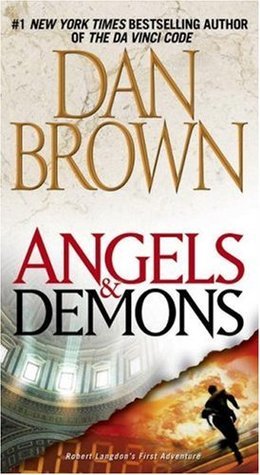 Angels & Demons
Angels & Demons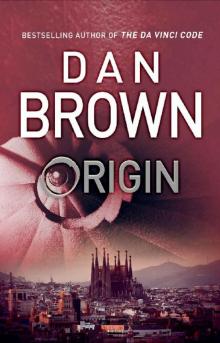 Origin
Origin The Da Vinci Code
The Da Vinci Code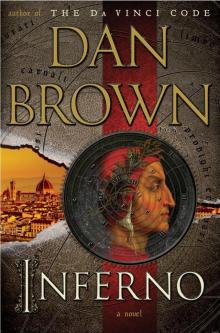 Inferno
Inferno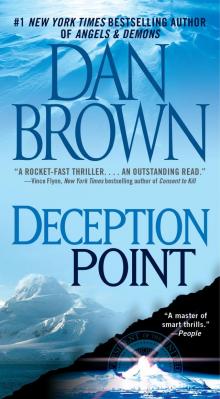 Deception Point
Deception Point Digital Fortress
Digital Fortress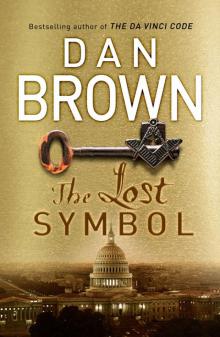 The Lost Symbol
The Lost Symbol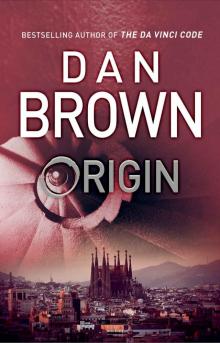 Origin: (Robert Langdon Book 5)
Origin: (Robert Langdon Book 5)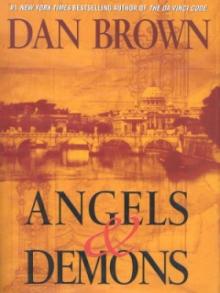 Angles & Demons
Angles & Demons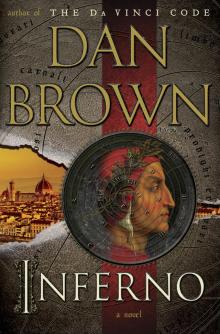 Inferno: A Novel
Inferno: A Novel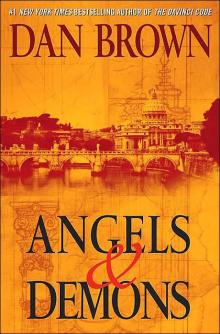 Angels & Demons rl-1
Angels & Demons rl-1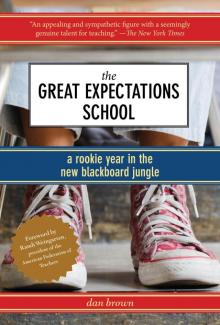 The Great Expectations School
The Great Expectations School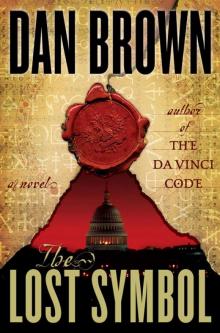 The Lost Symbol rl-3
The Lost Symbol rl-3 Angels and Demons
Angels and Demons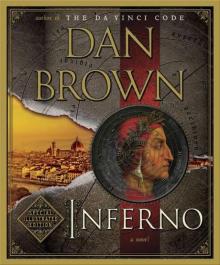 Inferno: Special Illustrated Edition: Featuring Robert Langdon
Inferno: Special Illustrated Edition: Featuring Robert Langdon